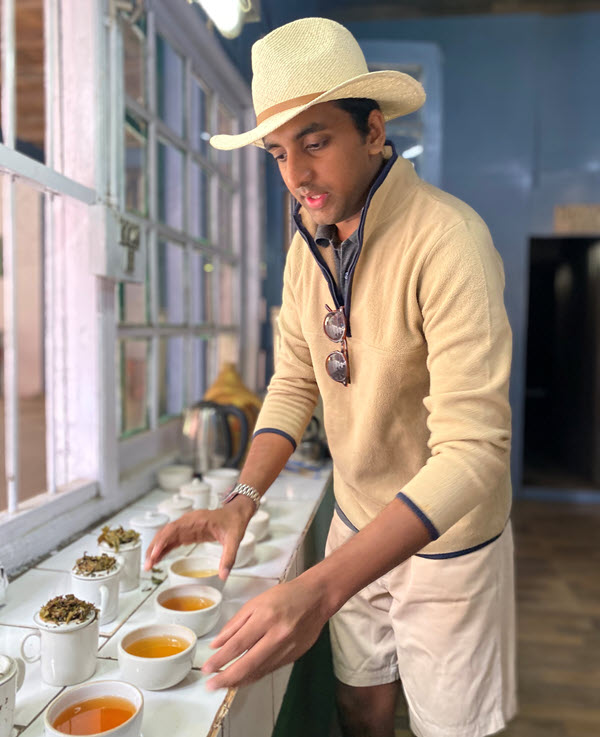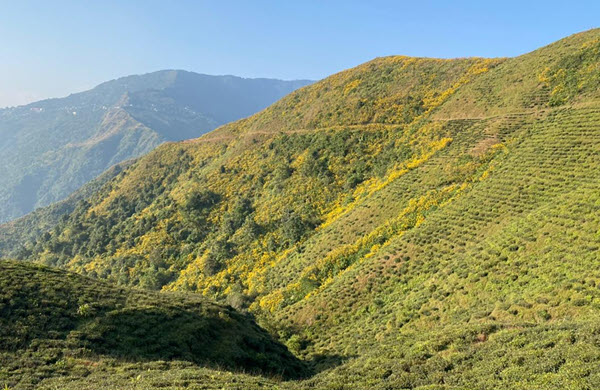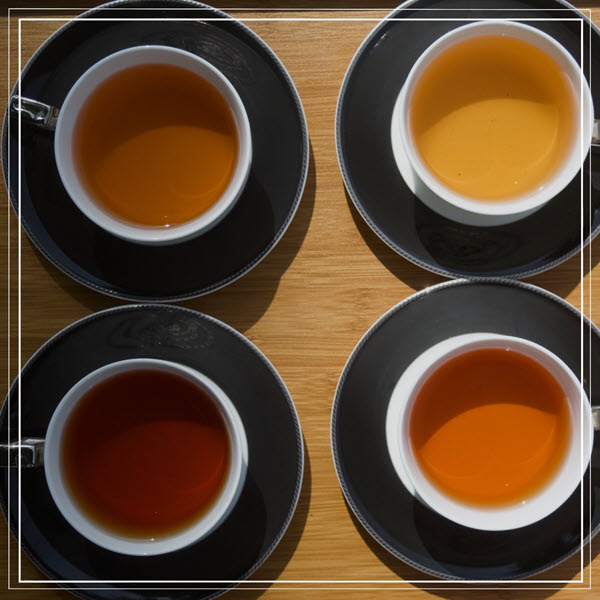
Brand Appeals to Domestic Consumers to Revive Darjeeling
Dorje Teas, a Darjeeling brand launched in June, takes its name from the region’s Tibetan origins: Dorje Ling or Land of the Thunderbolt.
Founders Sparsh Agarwal and Ishaan Kanoria are targeting India’s domestic market and offer a subscription model. The brand’s origins lie in Selim Hill, one of Darjeeling’s tea gardens that belong to the Agarwal family. Alongside the launch of Dorje Teas, Selim Hill is also reviving the Selim Hill Collective. Among other things, it has brought Rajah Banerjee, the man who built Makaibari tea gardens, back as chairperson of the collective and as a mentor to Ishaan and Sparsh.
The Agarwals’ connection with tea spans four generations to a time when Sparsh’s great grandfather sold tea chests to gardens and became a garden owner himself. About 30 years ago, the family acquired Selim Hill, a tea estate located right below Kurseong. The estate cover 1,000 acres, rising in altitude from 1000 to 4000 ft. The lower division is forest cover, with a rich bio-diversity. “We have a lot of elephants here. Hornbills are spotted regularly. Leopards too,” says Sparsh. The factory is in the upper-division with a bungalow restored and rechristened as the Second Chance Home because Dorje Teas is about second chances.
Listen to the interview
Like many of Darjeeling’s tea gardens, Selim Hill has not been profitable for a long time now. The irony of Darjeeling is that despite being a producer of fine teas, its 87 gardens constantly struggle against a barrage of problems, from climate change to socio-political turmoil and, now, the pandemic. Darjeeling’s dependence on exports further compounds this. Sparsh explains that the gardens are run mainly by absentee landlords — referring to the fact that most garden owners do not reside on the estate — which he cites as a problem.
When the pandemic arrived in 2020, the Agarwal family thought it was time to sell Selim Hill. The loss of the first flush, following the lockdown announcement, seemed like the final straw. “But Selim Hill also occupies a very special place in the hearts of a lot of family members, and also friends of family,” says Sparsh. He had just graduated from Ashoka University with a degree in political science and international relations. He was starting work as a Research Associate at The Centre for Policy Research when he asked his parents if they would be open to exploring ways to keep the garden and not sell it. They agreed.
When the lockdown was lifted, he drove up to Selim Hill from the family home in Kolkata. From then on, he began spending every other week at Selim Hill. These trips brought the realization that it needed a structural makeover if he needed to save the garden. He was joined by Ishaan Kanoria, “who also has an intimate connection with the garden,” and they began brainstorming.
During the next six months, they restored and repaired the assistant manager’s bungalow at the garden, “We needed to live in the tea garden itself if we wanted to revive it. We needed to live with the local community, understand what the problems are. Only then could those problems get solved. So we renovated the house. It’s a heritage structure, built in 1871. We were in contact with the former owners, to keep fidelity to the structure,” he adds. Sparsh’s mother renamed it “Second Chance,” symbolic of what they were trying to achieve when the building was completed.
During these months, the Agarwals also reached out to Rajah Banerjee, who formerly owned the Makaibari tea estate in Darjeeling. Since sold to Luxmi Tea, the garden is legendary for its teas and for bringing bio-dynamic farming practices into mainstream conversation. Among other things, Banerjee built Makaibari as a formidable brand, one that still works in its favor today.
Conversations ensued. As they began to articulate the problems that troubled Selim Hill – and indeed, most of Darjeeling’s tea gardens — a business plan for Dorje teas took shape.
Darjeeling has been “inaccessible, unaffordable, or just unavailable,” to the Indian consumer, says Sparsh. Yet, his research showed that India has been a significant market for Darjeeling tea and that only half of the 10,000 metric tons of Darjeeling is exported. Kolkata has always been a market, but what about the rest of India? was a question that came up. Along with, ‘Why were gardens making losses despite producing excellent and rather expensive teas?’
“The problem was in the four flush system that exists in Darjeeling,” says Sparsh. “The first and the second flush that gets exported sells for fancy prices. And yet, tea gardens are not able to break even. So obviously the problem lies with the monsoon and the autumn flush, maybe the monsoon more, and the autumn less.”
The other problem, they found, lay in the complex grading system of tea as whole leaf, brokens, fannings, and dust. The tea that comes out of the dryer or the Dryer Mouth Tea, continues Sparsh, is ready for consumption. But to create a uniform tea favored by the export market, this tea is cut and then graded. “To make the uniform whole leaf grade, we create the residue of the brokens, fannings and dust. Only 30% of the tea is sorted into the whole leaf grade and sold at a profit. So, we are not trying to cover the losses of the monsoon or autumn flush, but we are trying to cover the losses of the residue of the first and second flush themselves.”
More research showed that this step of breaking the whole leaf tea was a recent addition – no older than 30-40 years, and not how Darjeeling tea has been made traditionally.
Sparsh’s other dilemma was the hierarchy between the flushes, where the first flush is considered the best flush while the monsoon has suffered as the least preferred. He finds a high-fired monsoon flush tea with its smokey flavor “almost like a lapsang souchong” while friends and family in the tea business pronounced it a defect. Where he thought the tea worked well with a drop of milk, he was told you can’t add milk to a Darjeeling.
The duo was determined to give every flush its rightful due, celebrating the unique flavour, aroma, and story they carried. They sought inspiration in how vineyards in the 80s created a model that allowed them to showcase every season’s produce but have a ready market for it, with a subscription model. “We don’t have to be dependent on the export market, which requires us to break and cut the teas. The customer gets a better product. The garden gets a better deal. And the best thing about this is that we’re able to make Darjeeling tea affordable,” says Sparsh.
The pricing has been critical — the subscription costs INRs 2,300 ($31 per year), with four deliveries offered, one every season. Subscribers get 250g of whole leaf tea packed in a custom-sized bag, designed not to break the leaves. This pricing puts them closer to the most affordable Darjeeling in the market, which are Lipton Green Label and Makaibari’s Apoorva tea. At present, Dorje offers a black tea plan and a green tea plan, two tea types that have a ready market in India.
Sparsh recalls that “many years ago I had the good fortune of working at the Islamic Arts Gallery at the Metropolitan Museum in New York. One of our projects was on a Persian carpet. And I remember Navina Haidar, the person I worked under, explaining to me the concept of tawheed and the oneness of God and how that is represented in the Persian carpet. And how the Persian carpet is supposed to be imperfect.” He draws this analogy to talk about the inconsistency of the tea leaves that go into the Dorje packets, insisting that in this inconsistency lies the charm of a fresh farm product.
Dorje Teas is a new generation tea brand that takes the consumer even closer to the place of origin, recognizing the new-age Indian consumer as its audience while resetting the tea business to place value and quality at its center for both producer and consumer.
Says Sparsh, “If Darjeeling is to survive, if there is to be a Darjeeling tea Renaissance, it has to be with Indians. Indians need to understand the handicraft of this industry and they need to want to support it, because this is one of the most phenomenal products that India has ever made.”
His vision may prove to be a new narrative for Darjeeling tea.

Share this post with your colleagues
Signup to receive Tea Biz weekly in your inbox.









3 responses to “Reviving Darjeeling”
Wonderful thinking by motivated youngsters taking over the Prestigious Darjeeling tea to new heights I fully agree that we need to educate our Indian consumers to drink a nice healthy beverage which is not comparable to any Tea in the world. Best of luck.
Very well written article.
I think ,the issue with Darjeeling teas has been that 1) we have allowed markets to dictate to us. 2) Merchant exporters have milked Darjeeling teas at the expense of the manufacturers 3)We have never pursued a market for these within the country.
It is nice to see youngsters taking these issues by the scruff of the neck and trying to address them.Kudos to them and wish them all the best in their endeavour.